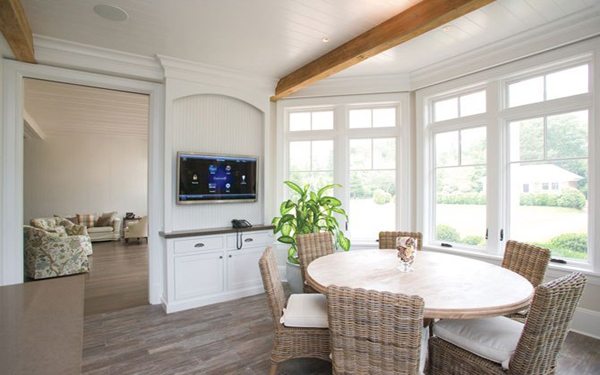 In college I knew a guy (engineering student, obviously) who’d performed some brand of IT black magic so that he could control all of his home devices from a single remote. This seemed wonderfully advanced, almost a kind of science fiction available only to tech savants.
In college I knew a guy (engineering student, obviously) who’d performed some brand of IT black magic so that he could control all of his home devices from a single remote. This seemed wonderfully advanced, almost a kind of science fiction available only to tech savants.
In the intervening years, our homes have remained surprisingly analog, but that’s changing. In January, Google bought smart home device company Nest for $3.2 billion, heralding a new era in the Internet of things, one where digital chips will serve our comfort, safety and design aesthetic.
Research firm Gartner predicted that by 2020 there will be 26 billion Internet-connected objects, excluding computers, tablets and smart phones. That’s 30 more times than there were in 2009. Nest’s most popular product is its thermostat that learns residents’ habits and preferred temperatures and then adjusts the temperature accordingly.
It’s exciting to think about the future possibilities of home automation. I, for one, long for the day when my house will clean the bathroom itself. At the moment though, what the market offers mostly has to do with remote access and automation of existing functions.
 Via: Architectural Digest
Via: Architectural Digest
This Hamptons home featured in Architectural Digest has eight Wifi access points, motorized and automatic blinds, a secure network for performing business transactions, plus all of its locks and thermostats are remotely accessible via smartphone or table. While that sounds like a dream, it also probably took some tricky programming, beyond the scope of those of us lacking my engineering friend’s prowess or the means to hire professionals to do it for us. CNET writer Nick Statt pointed out that products like Nest’s still have to contend with complicated connectivity issues and privacy concerns.
Google isn’t the only company getting in on the growing smart home sector. CNN did a roundup of smart-home products. From digital cutting boards that can display recipes and weigh food, to toilets that can stream podcasts – the possibilities are dazzling. The HiCan bed pictured above has a built-in multimedia system and computer. But the fantasy of watching hi-def movies in a sumptuous bed is tempered by knowing I already spend too much time on my iPhone before sleep. Maybe it would be better to leave it somewhere else at bedtime.
As smart home devices proliferate, it will be increasingly important for home owners and designers to consider what level of connectivity suits residents’ lifestyle. More isn’t always better. I know people who’ve done away with Wifi at home: the nearest connection point is never far away (if you live in a city) and not having Internet can be freeing and spur productivity.
There’s a difference between products that save energy and automate existing functions and products that will further integrate digital life with our non-digital one. A cost-saving thermostat seems like a no-brainer, but whether or not a bathroom that functions like an iPhone is necessary or even desirable is a question we’ll all have to ponder individually.

